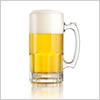Your cart

 USA: US craft brewers adapting to new normal, Brewers Association says
USA: US craft brewers adapting to new normal, Brewers Association says
The Brewers Association, the trade association representing America’s small and independent breweries, delivered its annual state of the industry address on April 30.
The address was given by Bart Watson, in his new role as the Association’s president and CEO, a position he has held since January 6, 2025, though he has given the address in recent years as the Association’s chief economist. Watson’s strong economic background and data-driven analysis is annually one of the highlights for attendees of the Craft Brewers Conference, being held this year in Indianapolis, Indiana.
In his address, Watson reiterated the Association’s previous report that craft breweries in America produced 4.0% less beer in 2024 than in 2023 and for the first time since 2005, the Association recorded more breweries closing—524—than opening—430.
Despite this, 43% of breweries increased production volume in 2024, indicating that difficulties were not universal and that it is possible to thrive in the current climate. Watson noted that breweries making non-beer beverages—hard seltzer, ready-to-drink cocktails, flavored malt beverages or cider, for example—were more likely to have shown growth.
The hardest hit segment of the industry was the smallest breweries—those brewing less than 500 barrels per year—which collectively produced 9.5% less beer in 2024 than in 2023. Those smaller breweries often lack the capital to invest in equipment needed to make alternative products or to have their beer distributed through retail channels, which channels are becoming more selective in what SKUs they carry in light of declining craft beer sales.
While the industry has, in recent years, described its stagnant growth as “headwinds,” Watson’s presentation for 2025 distinguished between short-term difficulties and long-term trends, some of which craft breweries may need to face up to in order to survive. Watson’s presentation was titled, “Headwinds Or New Reality.”
While much has been written about Gen Z drinking less, the Brewers Association reported that the number of people drinking craft beer was actually growing. 9.8% of people of legal drinking age report drinking craft beer. But while in prior years, there were more drinkers reporting drinking more craft beer than the number of drinkers reporting less craft beer, those lines crossed in 2024 on a graph presented during Watson’s speech. So while there are more drinkers, they are choosing to drink craft beer less.
Craft beer drinkers tend to be higher-income, but are becoming more price elastic, said Watson. In the face of inflationary pressures, former craft beer drinkers were, at least on some occasions, choosing beverages other than craft beer that might offer better value.
According to Watson, younger consumers are less likely to make purchasing decisions based on product category and more likely to choose beverages based on flavor profile. This is why breweries making non-beer products were able to retain customers, rather than losing customers to other beverage alcohol products.
Ironically, the craft beer industry might be suffering from its own success. Watson said that when consumers are asked why they do not drink craft beer, those consumers often say craft beer is too bitter or too hoppy. This is because many craft breweries have been leaning heavily into various forms of IPA that have been the best selling beers. The success of the craft beer industry in recent years has been driven by the popularity of IPA, which has become ubiquitous in craft beer taprooms.
But beer includes many beer styles and many flavor profiles, covering fruity sour beers, malty stouts, funky farmhouse ales and everything in between. To encourage consumers to choose craft beer on more occasions “breweries need to talk about flavor and variety,” said Watson.
Zpět
E-malt.com, the global information source for the brewing and malting industry professionals. The bi-weekly E-malt.com Newsletters feature latest industry news, statistics in graphs and tables, world barley and malt prices, and other relevant information. Click here to get full access to E-malt.com. If you are a Castle Malting client, you can get free access to E-malt.com website and publications. Contact us for more information at marketing@castlemalting.com .





